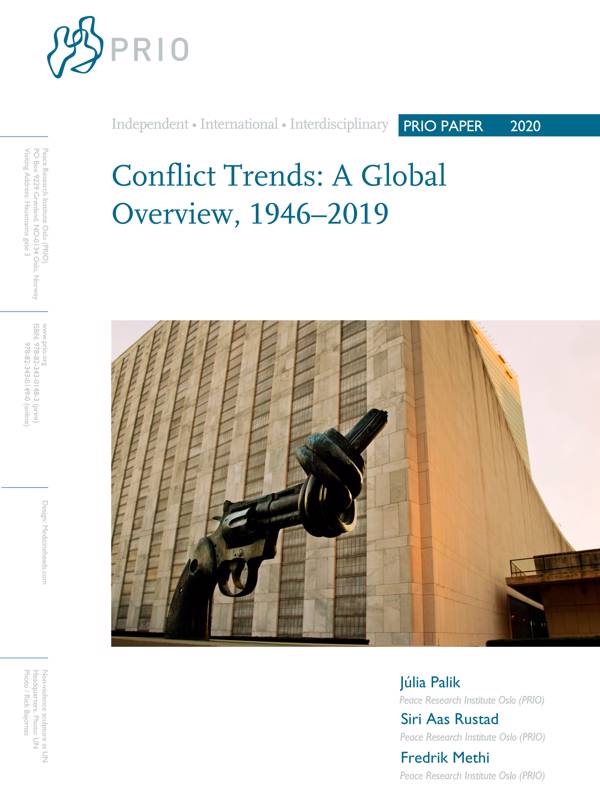This PRIO Paper examines global trends in conflicts between 1989 and 2019 using data from the Uppsala Conflict Data Program (UCDP). In addition, it examines trends in conflict recurrence, ceasefires, and peace agreements in the same period. 2019 saw a record high number of state-based conflicts, with a total of 54. Many of these conflicts are related to the Islamic State (IS), which is, despite the crackdown in Syria, far from being defeated: In 2019 it reached Burkina Faso and Somalia.
In 2019, more than 50,000 people were killed in conflict-related events, most of them in Afghanistan and Syria. This was nonetheless a decrease from 2018. The international community is working hard to resolve conflicts across the world. The past 10 years saw an increase in the number of humanitarian ceasefires, especially in the Middle East. However, there has been a relative decrease in peace agreements in the past few years. While non-state conflicts declined from 2018 to 2019, they still remain high and are a persistent threat to security, especially in Africa and Latin America. In 2019, Africa was the only region to see an increase in one-sided violence. Promisingly, however, Africa has also experienced the highest number of peace agreements in this thirty-year period.










